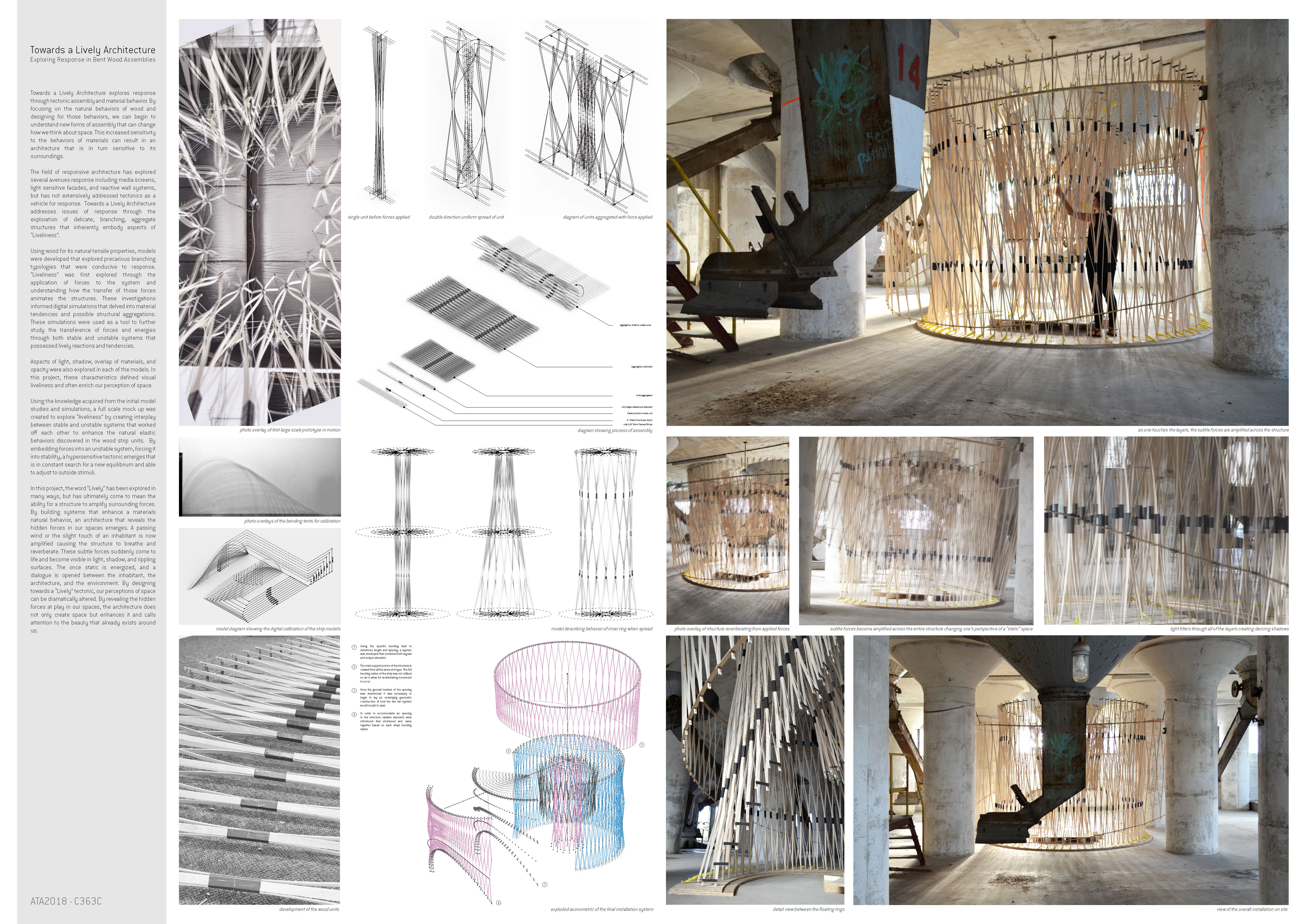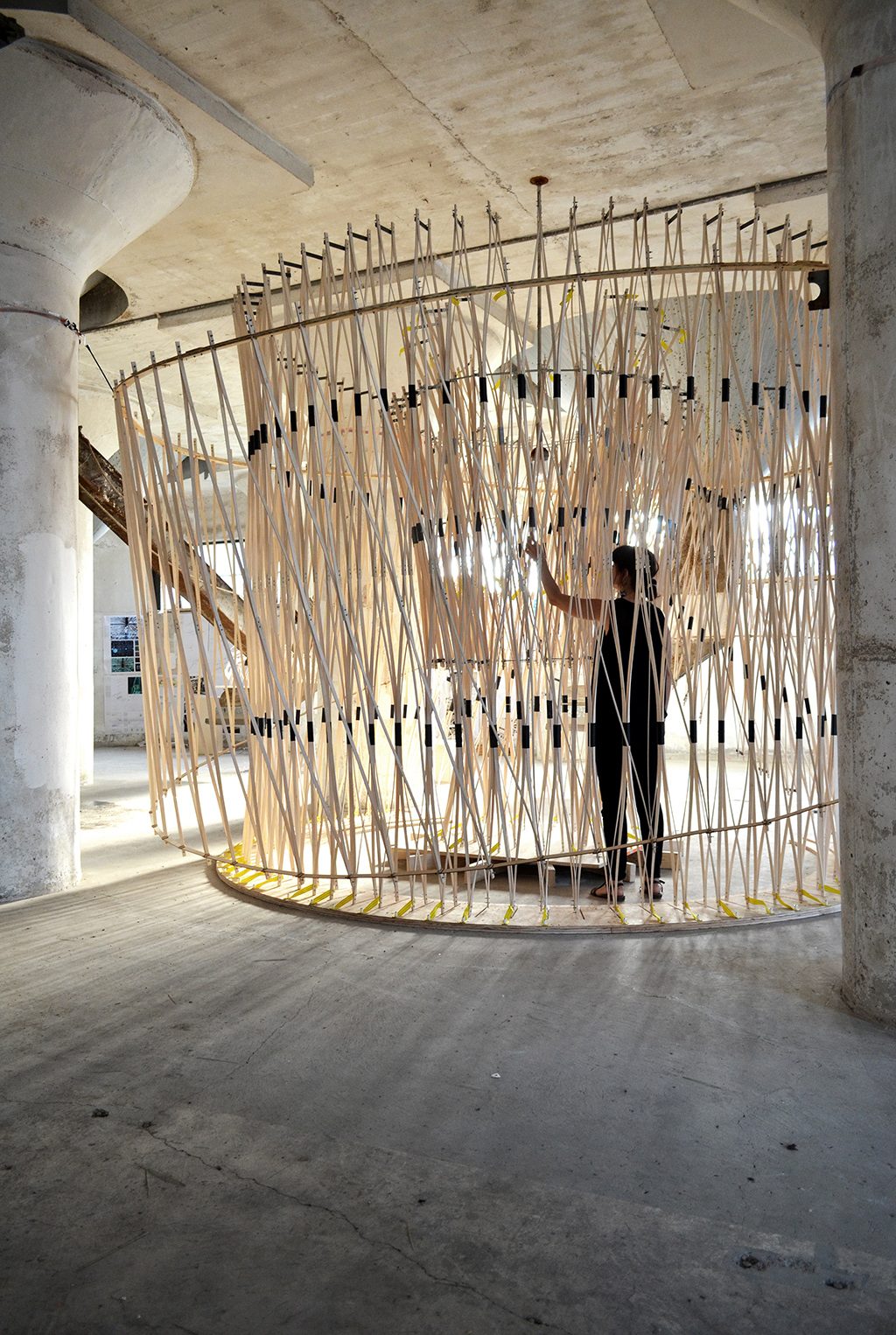Towards a Lively Architecture explores response through tectonic assembly and material behavior. By focusing on the natural behaviors of wood and designing for those behaviors, we can begin to understand new forms of assembly that can change how we think about space. This increased sensitivity to the behaviors of materials can result in an architecture that is in turn sensitive to its surroundings.
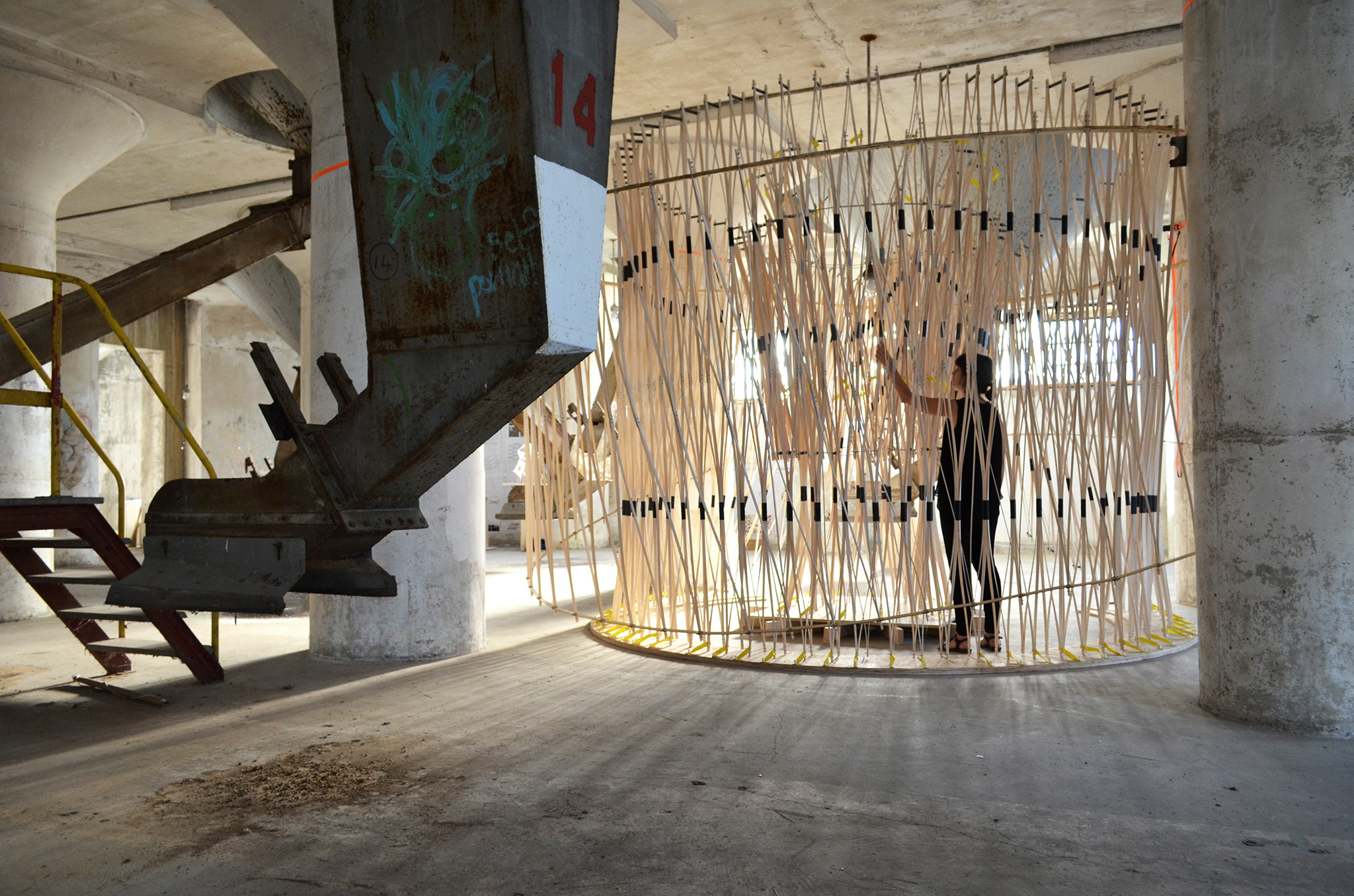
The field of responsive architecture has explored several avenues response including media screens, light sensitive facades, and reactive wall systems, but has not extensively addressed tectonics as a vehicle for response. Towards a Lively Architecture addresses issues of response through the exploration of delicate, branching, aggregate structures that inherently embody aspects of “Liveliness”. Using wood for its natural tensile properties, models were developed that explored precarious branching typologies that were conducive to response. “Liveliness” was first explored through the application of forces to the system and understanding how the transfer of those forces animates the structures. These investigations informed digital simulations that delved into material tendencies and possible structural aggregations. These simulations were used as a tool to further study the transference of forces and energies through both stable and unstable systems that possessed lively reactions and tendencies. Aspects of light, shadow, overlap of materials, and opacity were also explored in each of the models. In this project, these characteristics defined visual liveliness and often enrich our perception of space.
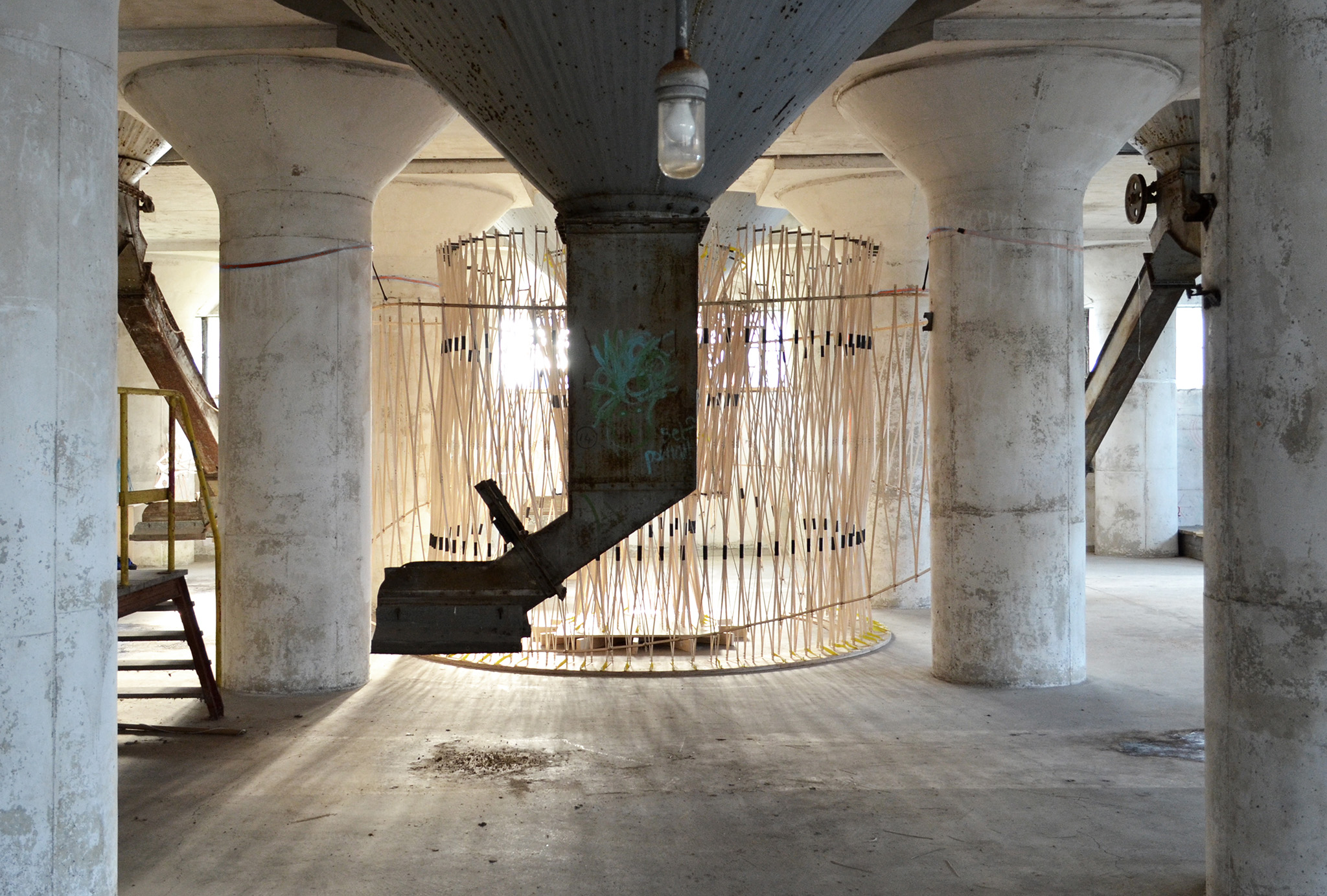
Using the knowledge acquired from the initial model studies and simulations, a full scale mock up was created to explore “liveliness” by creating interplay between stable and unstable systems that worked off each other to enhance the natural elastic behaviors discovered in the wood strip units. By embedding forces into an unstable system, forcing it into stability, a hypersensitive tectonic emerges that is in constant search for a new equilibrium and able to adjust to outside stimuli. In this project, the word “Lively” has been explored in many ways, but has ultimately come to mean the ability for a structure to amplify surrounding forces. By building systems that enhance a materials natural behavior, an architecture that reveals the hidden forces in our spaces emerges. A passing wind or the slight touch of an inhabitant is now amplified causing the structure to breathe and reverberate. These subtle forces suddenly come to life and become visible in light, shadow, and rippling surfaces. The once static is energized, and a dialogue is opened between the inhabitant, the architecture, and the environment. By designing towards a “Lively” tectonic, our perceptions of space can be dramatically altered. By revealing the hidden forces at play in our spaces, the architecture does not only create space but enhances it and calls attention to the beauty that already exists around us.
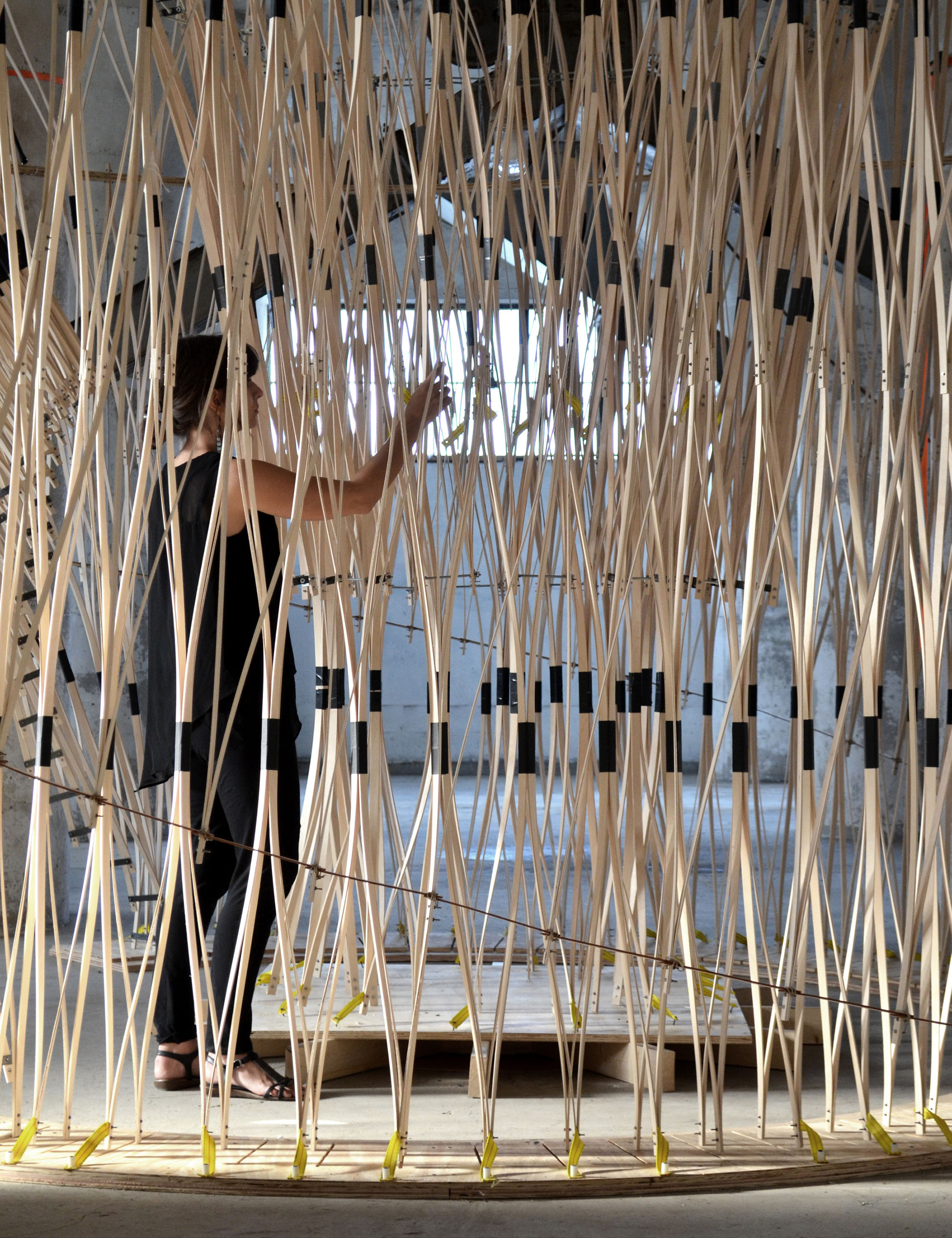
The Board:
